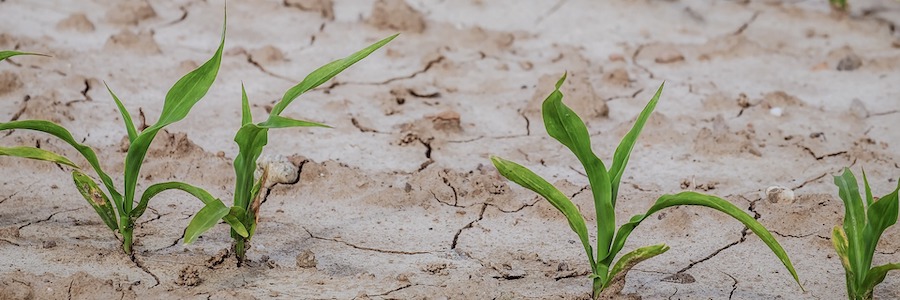A new survey by the American Farm Bureau paints a grim picture of just how severely the drought and shortage of irrigation water is impacting farmers and ranchers in the 17-state west, southwest and central plains regions.
First a little background. The 17 states comprising the survey area, which include the north of Texas, up along the central plains to North Dakota and west to California are vital to the U.S. agricultural sector, supporting nearly half of the nation’s $364 billion production by value. This includes 74% of beef cattle, over 80% of wheat production by value and over 70% of vegetable, fruit and tree nut production.
Persistent drought conditions put production of all the above commodities at risk, along with the stability of farms, ranches and local and regional economies reliant on agriculture for income.
This reality also puts American consumers at risk of even further escalating food prices at the grocery store. The price of food, for example, is already 13.5% higher than it was a year ago because of food inflation, according to the U.S. Labor Department.
The key findings of the survey of farmers and ranchers should be alarming to government officials and average Americans alike.
For example, 37% of farmers surveyed said they are tilling under crops because of the drought and lack of irrigation water. Additionally, 33% are removing orchards and other multiyear crops like vineyards because of a lack of water. The multiyear crops represent major investments because many don’t start producing fruit for three-five years. This not only means a major loss in revenue for growers but also that the reduced production volume from removing these crops is long-term as well as short-term.
Here in California, which is the tree nut capital of the world, a whopping 50% of growers responding to the survey said they are removing trees due to the drought and water shortages. The price of almonds, walnuts and pistachios is going to be severely impacted by this, resulting in much higher prices for food manufacturers and consumers.
Additionally, California and Arizona produce 98% of all leafy greens, including lettuce, in the U.S. These growers too report they’re tilling under numerous acres of lettuce and other leafy greens due to the drought and water shortage. As a result of this, the cost of making a salad is going to increase for consumers in every state in the country.
On the livestock side of the survey, ranchers say they are liquidating herds at an unprecedented rate because they don’t have enough water to support the size of their herds. Additionally, ranchers say in many cases they’re having to drive up to 15 hours to be able to buy hay, including at prices far above normal cost.

Over 60% of the west, southwest and central plains regions are now categorized as D3, severe drought or higher, and the situation isn’t improving as we enter October.
Oddly enough, this appears to me to be one of the most serious crises going on in our country that the fewest number of people care about, despite the fact it hits consumers where it hurts the most – in their pocketbooks. This is an eater’s crisis as much as it is an agriculture crisis. The implications for the economy also are huge. The cost of food is nearly 15% higher than a year ago and the cost of some foods like beef, chicken, cheese and others are up by 20-35% compared to the same time last year, yet there seems to be very little concern among the public, and very little serious action being taken by the federal government and state governments.
The hardest hit by the drought are family-owned and operated and other small farms and ranches.
Many of these smaller-scale farmers and ranchers – the backbone of U.S agriculture – likely won’t survive the economics of the drought and will have to either sell their land or go out of business. Not only is this extremely sad, it’s also a negative for food production in America.
My view is that we need an Apollo moon shot-style comprehensive program to address the drought, which is going to persist. This initiative needs to be headed up by the federal government and to include state governments in all states impacted by the drought. The initiative needs to be big and bold, to include financial assistance to farmers and ranchers, particularly to family farmers and ranchers.
Currently, USDA and state department’s of agriculture are helping around the edges and not addressing the severe impact that drought and water shortages are having on farmers and food production in the U.S. This is a huge mistake. Climate change and drought are not short-term issues, particularly in the west. The time to address this in a big way is now.
My Job Depends on Ag Magazine columnist and contributing editor Victor Martino is an agrifood industry consultant, entrepreneur and writer. One of his passions and current projects is working with farmers who want to develop their own branded food products. You can contact him at: victormartino415@gmail.com.







